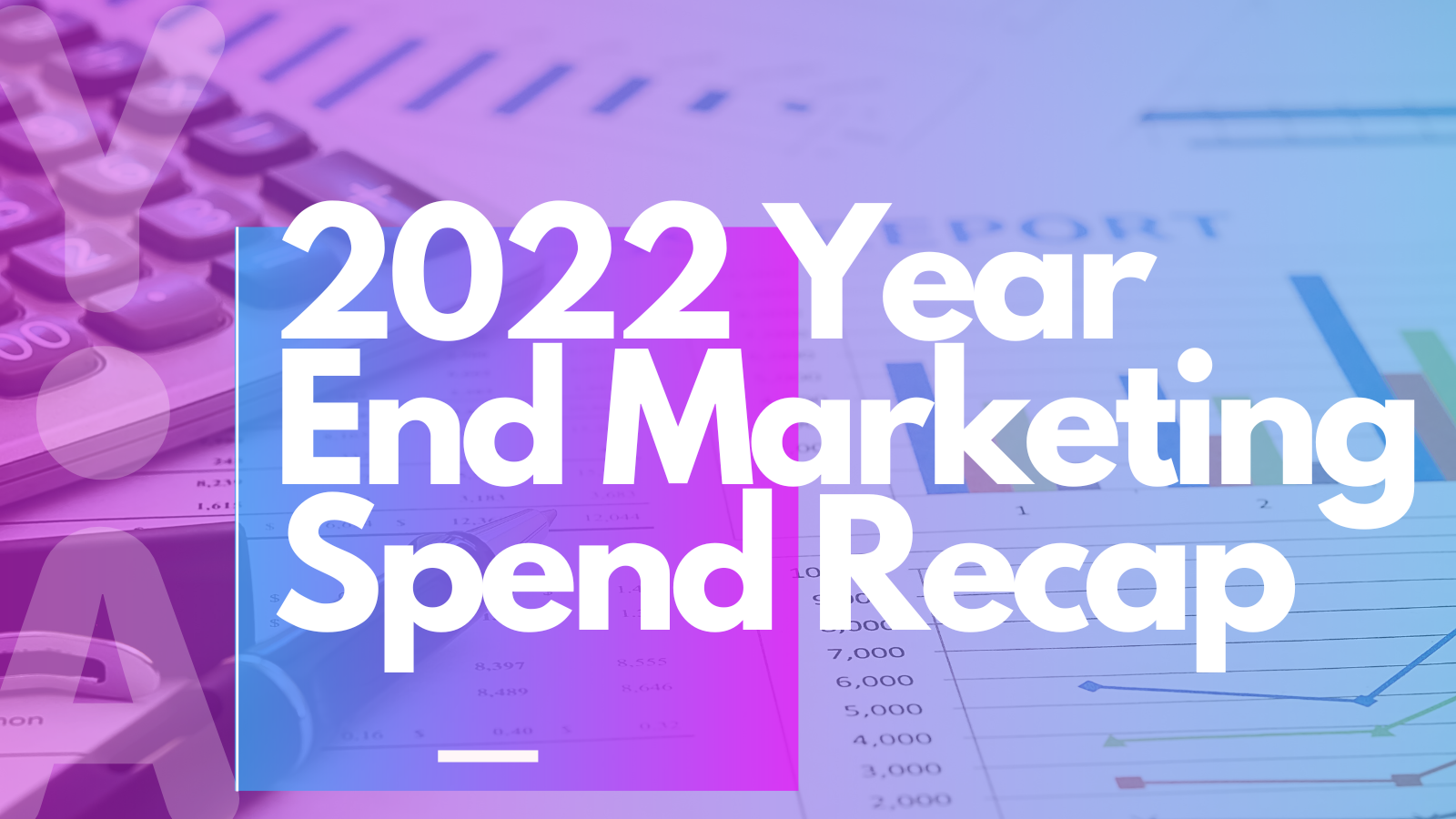In 2022, marketing budgets climbed to 9.5% of total company revenue, a 48.4 %increase from 2021. Marketing budgets reported an all time low in 2021, which can be attributed to pandemic concerns and slowing spending by businesses wary of an unknown economic climate.
But businesses are investing in their marketing budgets again and reaping the benefits. Despite rumblings of a recession, marketers are forging ahead on driving a return on investment for their brands. When CMOs reimagine strategies and innovate, they act as change agents for the rest of the company.
We’re sharing how marketing dollars were spent in 2022 and what marketing trends will continue to drive overall company success in 2023.
Where are Marketing Dollars Being Spent?
Seventy percent of CMOs reported their budgets had increased in 2022 with overall marketing budgets hitting 9.5% of total company revenue. Marketers got creative with where they spent their money last year with return on investment leading strategies in 2022. Offline marketing initiatives, re-engagement and outsourcing tasks to experts in the field were the top three marketing spend themes in 2022.
Online vs Offline Marketing Initiatives
In 2022, online channel budgets dropped to 56% and overall budget was reinvested in offline marketing initiatives. In comparison, during the pandemic offline marketing spend was put to the side. It didn’t make sense for marketers to invest in events and in-person marketing activities when the public was mandated to stay indoors. In 2021, marketers spent approximately two-thirds of their budget on online channels compared to over half of the budget in 2022.

|
CMOs were finally able to put marketing dollars into conferences, dinners and other in-person events that had been put on the back burner for the past two years. Around 18.8% of offline marketing budgets were allocated to event marketing in 2022. A further 15.3% was devoted to sponsorships, while TV advertisements took up 14% of marketing’s budget.
Digital marketing strategies allow companies to reach a global audience in a way that’s cost-effective, scalable and measurable. These marketing strategies allow companies to focus your efforts on only the target consumer. Both offline and online marketing strategies will remain important in 2023, with continued emphasis on in-person events.
Retention and App Re-engagement
In 2022, CMO priorities shifted to a greater focus on customer acquisition, retention, and engagement. Around 18% of marketers invested in these strategies in 2022 compared to a mere 10% in 2021. Re-engagement and retention are extremely important marketing tools that alppyi to any app vertical.

|
App retargeting and re-engagement campaigns prioritize advertising spend on users who have been identified as more likely to convert based on previous activities. Because users have been identified as likely to convert, marketers tend to see a higher ROI compared to most other digital channels. Customer retention is critical because the cost of acquiring new customers is five times higher than retaining existing customers. Retained customers are also more likely to engage with the brand and stay loyal.
It makes sense that marketers utilized customer retention tools in 2022 and will continue in 2023. Increasing user retention by even 5% can increase overall profits by 25-95%. The success rate of selling to a customer you already have is 60-70%, while the success rate of selling to a new customer is 5-20%. When marketers make sure that they bring in loyal users, the benefits drive high return on investment for the entire company.
Utilizing External Resources
CMOs didn’t deviate from their resource mix over the last few years, but they did spend less on internal labor costs and more on outsourcing to agencies and other services. The majority, 58% to be exact, of CMOs in 2022 reported that they did not have the internal capabilities to achieve their strategic marketing objectives. Marketing teams instead leaned more on experienced vendors or agencies to fill in the gaps.
Hiring agencies or vendors enhances the efforts of the overall marketing team and scales projects that the current marketing team isn’t well-versed in or doesn’t have the bandwidth to accomplish. Using external vendors provides a CMO with expert support cost-effectively; versus having to hire an in-house team, to then train up with the intricacies of internal processes.
When companies partner with external agencies or vendors, they get to choose from the most experienced companies in the industry. This allows businesses to hire experts that have a background in specific markets, albeit niche for the specific need with resources to accompany it. For example, hiring YouAppi for app re-engagement and growth goals allows companies to keep their current marketing team focused on their tasks and let engagement experts handle growth and retention of app users and mobile marketing strategy.
Takeaways of 2022 Year End Marketing Spend Recap
In 2022, marketing budgets climbed to 9.5% of total company revenue, an increase from 6.4% in 2021. Businesses are investing in their marketing budgets again and reaping the benefits. Find out how marketing dollars were spent in 2022 and what marketing trends will continue to drive overall company success in 2023.
- Online vs Offline Marketing Initiatives: In 2021, marketers spent approximately two-thirds of their budget on online channels. In 2022, however, online channel budgets dropped to 56% and the budget began to be reinvested into offline marketing initiatives.
- Retention and App Re-engagement: In 2022, CMO priorities shifted with a greater focus on customer acquisition, retention, and engagement in 2022. Around 18% of marketers invested in these strategies in 2022 compared to a mere 10% in 2021.
- Utilizing External Resources: CMOs spent less on internal labor costs and more on outsourcing to agencies and other services in 2022. Marketing teams instead leaned more on experienced vendors or agencies to fill in the gaps versus in-house.




